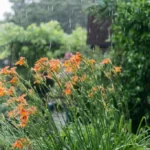Maintaining a lush and weed-free lawn is a common goal for homeowners in North Texas. However, achieving this requires more than just mowing and routine maintenance. Pre-emergent herbicides play a crucial role in weed control, but timing is everything. In this guide, we’ll delve into the optimal timing for applying pre-emergent herbicides in North Texas. By understanding the local climate, weed growth patterns, and the changing seasons, you’ll be better equipped to keep your lawn vibrant and weed-free.
North Texas Climate
North Texas is known for its unique climate, marked by hot summers and relatively mild winters. This climate diversity creates a dynamic environment for lawn care. Some key climate characteristics to keep in mind include:
- Hot Summers: North Texas experiences scorching summers with high temperatures and intense sunlight. This heat can stress lawns and create ideal conditions for certain weeds.
- Mild Winters: Winters in North Texas are generally mild, with occasional cold spells. This means that some weeds can thrive even during the winter months.
- Variable Precipitation: Precipitation patterns in North Texas can be inconsistent, with periods of drought and occasional heavy rainfall. These fluctuations affect soil moisture levels and weed growth.
Weed Growth Patterns
Weed growth in North Texas lawns can be categorized into two primary groups: warm-season and cool-season weeds, each with its own life cycle.
- Warm-Season Weeds: These weeds thrive in the hot summer months. Common warm-season weeds in North Texas include crabgrass, goosegrass, and dallisgrass. Pre-emergent herbicides applied in late winter or early spring can prevent these weeds from germinating.
- Cool-Season Weeds: Cool-season weeds, on the other hand, emerge during the cooler months, typically fall and early spring. Examples include annual bluegrass, chickweed, and henbit. Effective control of cool-season weeds often requires pre-emergent herbicide applications in early fall.
Understanding these growth patterns is vital for determining the most effective timing for pre-emergent herbicide applications in North Texas. By addressing both warm-season and cool-season weeds, you can maintain a resilient and weed-free lawn throughout the changing seasons. In the following sections, we’ll explore the specific timing for pre-emergent herbicide applications in different seasons to tackle these weed growth patterns effectively.
Early Spring (February – March)
Early spring, typically from late February to early March, marks the beginning of the growing season in North Texas. During this period, the focus of pre-emergent herbicide applications shifts toward controlling cool-season weeds. Cool-season weeds like annual bluegrass and chickweed can become problematic in lawns. Applying pre-emergent herbicides during this window is crucial to prevent these weeds from germinating and establishing themselves. By doing so, you’ll set the stage for a weed-free and thriving lawn throughout the growing season. Remember that timing is essential during this early spring application to ensure maximum effectiveness in controlling cool-season weeds.
Late Spring (April – May)
As North Texas transitions from early to late spring, pre-emergent herbicide applications continue to be important. During this period, the emphasis shifts to targeting warm-season weeds like crabgrass and goosegrass. These weeds typically germinate as temperatures rise. Applying pre-emergent herbicides in late spring, usually in April or May, creates a barrier that prevents these weeds from taking root in your lawn. It’s important to follow up on the early spring application to ensure comprehensive weed control, especially for warm-season weeds that can become invasive during the hot North Texas summer.
Summer (June – August)
Throughout the summer months in North Texas, the need for pre-emergent herbicide applications decreases. By this time, most weeds, whether cool-season or warm-season, have already germinated and established themselves. However, maintaining a healthy and well-cared-for lawn during the summer is crucial to prevent weed infestations. Adequate irrigation, regular mowing, and proper lawn care practices can help create a robust turf that outcompetes weeds. During this season, focus on preserving the health of your lawn and preventing the spread of existing weeds. Though pre-emergent herbicides have a lesser role during the summer, they remain a valuable tool in your overall weed control strategy, especially for addressing late-germinating weeds that may still appear.
Early Fall (September – October)
In early fall, from September to October, your attention returns to pre-emergent herbicide applications. This time, the focus is on preventing late-germinating summer weeds and preparing for the emergence of cool-season weeds. Applying pre-emergent herbicides in early fall can help control late-germinating summer weeds like crabgrass and goosegrass. Additionally, it creates a protective shield against cool-season weeds, including annual bluegrass and henbit, that typically begin to germinate during this season. By staying proactive in early fall, you’ll be better prepared to maintain a weed-free lawn as the seasons transition.
Late Fall (November – December)
Late fall, spanning from November to December, represents the closing chapter of the year for pre-emergent herbicide applications. While the importance of late fall applications is somewhat reduced, certain pre-emergent herbicides can still be effective, especially for controlling late-germinating cool-season weeds. As temperatures drop, lawns in North Texas may enter a period of dormancy. During this time, focus on preparing your lawn for winter by addressing other aspects of lawn care. While pre-emergent herbicides take a back seat, they remain a valuable tool in your arsenal for preventing winter annuals like annual bluegrass and henbit.
Conclusion
Effectively timing pre-emergent herbicide applications in North Texas is essential for maintaining a healthy, weed-free lawn. The region’s climate and diverse weed growth patterns require a proactive approach that adapts to the changing seasons. From early spring to late fall, you have opportunities to target both cool-season and warm-season weeds, setting the stage for a vibrant lawn year-round.
While pre-emergent herbicides play a vital role, remember that they are just one component of a comprehensive weed control strategy. Proper lawn care practices, including mowing, watering, and soil health maintenance, complement pre-emergent applications. By understanding North Texas’ climate, weed growth patterns, and the intricacies of each season, you can make informed decisions to ensure a beautiful, resilient, and weed-free lawn in this dynamic region.



